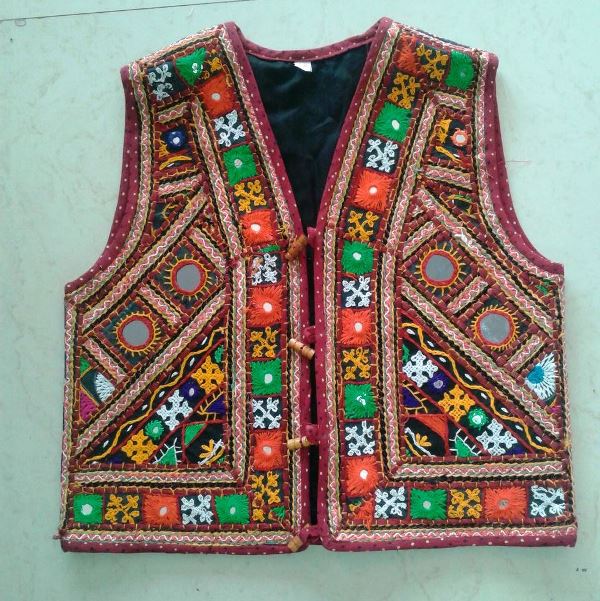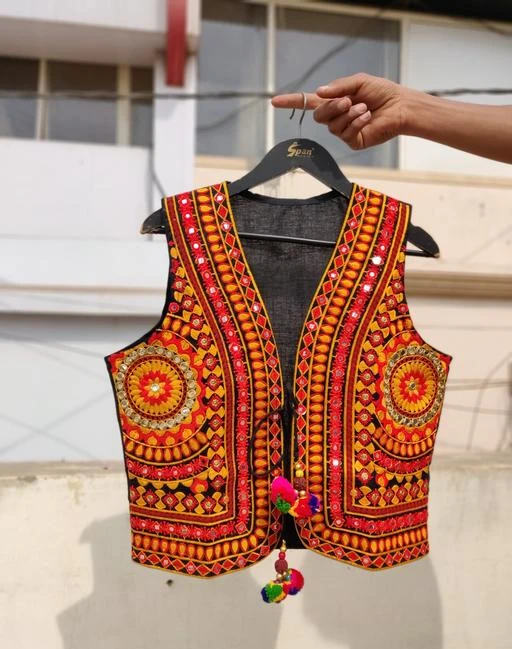ॐ श्री गुरुभ्यो नमः ॐ श्री शिवानन्दाय नमः ॐ श्री चिदानन्दाय नमःॐ श्री दुर्गायै नमः
Source of all Images in this Blog-post : Google Images : ‘Google Image Search’ will reveal the multiple sources of every single image shared here. For more details, kindly see ‘Disclaimer‘
Rabari embroidery work of the Kutch region of Gujarat
A write-up on Rabari embroidery work of the Rabari tribes of Gujarat below the following images of Rabari embroidery














Gujarat is famous all over the world for its embroideries and mirror work on fabrics.
There are about 16 different types of embroideries done in the Kutch region of Gujarat. But the most well known one, with its chain stitches and countless mirrors, is the Rabari embroidery.
It gets its name from the Rabari tribes, who are a nomadic community of cattle raisers living in the western region of India from the state of Rajasthan to the Kutch region in Gujarat.
The tribe migrated into this region from Sindh (now in Pakistan) about 400 years ago and many of their relatives still live there.
They have wonderful stories about their origin, ranging from a connection with Shiva to Rajputs going outside their territories.
Rabari, or Rahabari means one who lives outside or goes out of the path.
Among the Rabaris, the community is further sub-divided into the Garasia, Kachela, Dhebaria and Wagadia of Kutch.
Many of the Rabaris live in circular huts, known as Bhunga. These have proven to be much resistant to earthquakes in the tremors that hit Kutch in 2001.
Although a cattle rearing community, they also engage in intricate embroidery work. The men work with leather while the women embroider garments and accessories.
As the type of embroidery on the garment clearly distinguishes the person’s identity, the different communities of Rabaris can be identified from the type and placement of embroidery on their Odhanis (veils for head and shoulders).
For example, the Wagadia Rabaris wear Odhanis with embroidered borders while the Kachela Rabaris have designs in the centre of the Odhanis.
Rabari weddings are a colourful affair as any Indian wedding, but one of its aspects requires years of preparation.
It is the preparation of dowry. The girl prepares her own dowry and only after it is ready she can go to her husband’s home.
It may even take two or three years to prepare the trousseau which includes the girl’s clothes, bags, bedcovers and even the decorative camel cover.
All of these are embroidered by the girl, and in this way, she also learns the skills which have passed on to the next generation through generations.
The men also wear embroidered clothes, the white pleated and embroidered Kediyu being the most well known garment.
Rabari embroidery is characterized by chain stitches and a generous use of mirrors. The women depict the world around them without the help of sketches or patterns.
The only material used is a simple needle and thread, which they purchase from Bhuj, the nearby town.
The stark landscape of Kutch with its thorny Babool and Keekar bushes is given a new dimension with colours by the vivid imagination of Rabari women, through chainstitches decorating the surface of cloth.